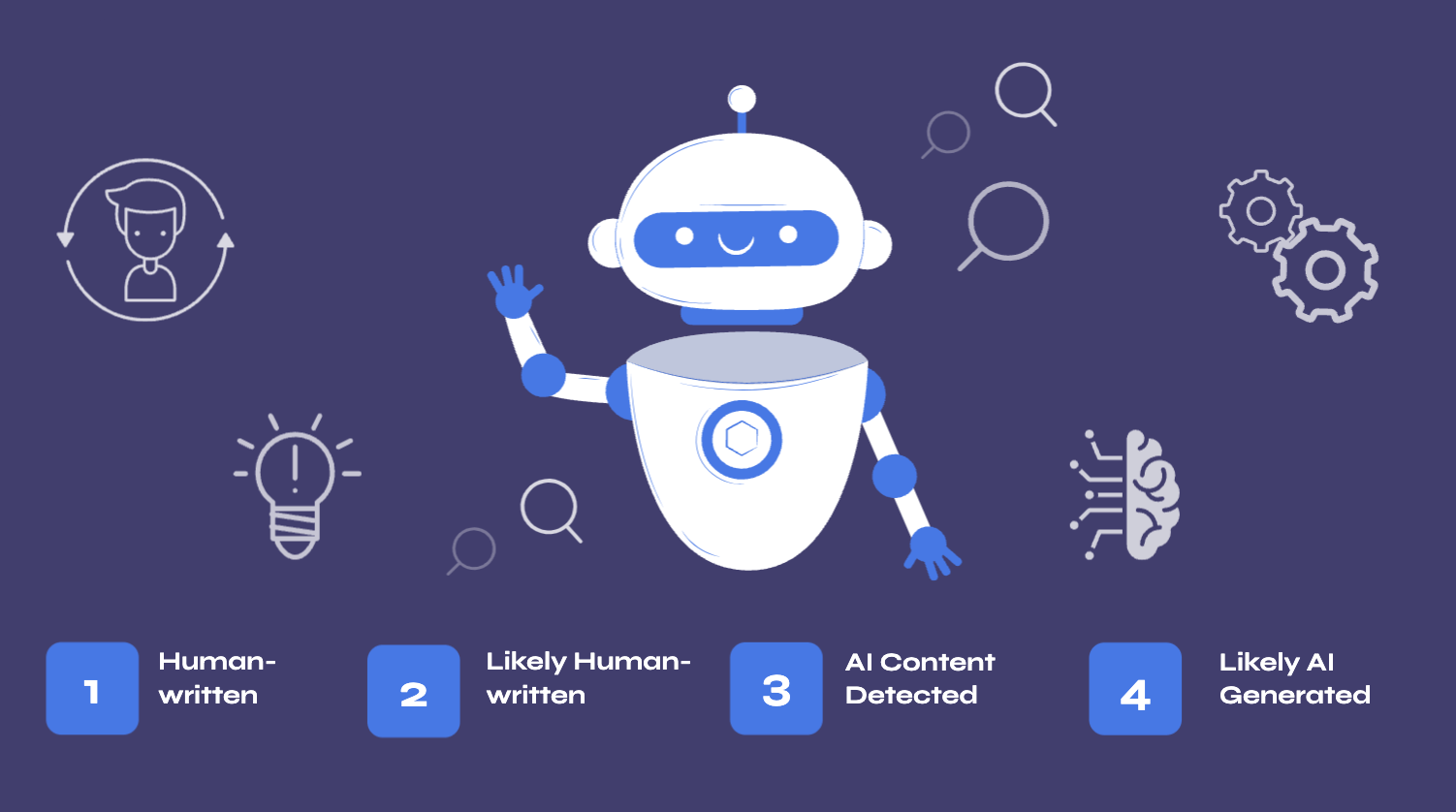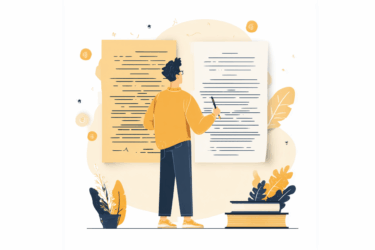Is it possible to know for sure who wrote the text: human or AI? AI Text Detector by PlagiarismCheck analyzes a number of parameters to help you answer this question, providing 97% accuracy. After scanning the text, the tool shows you one of four verdicts regarding the text authorship:

Why such a gradation of results?
Sometimes AI writes like a human, and sometimes a human writes in a “robot-style”. Occasionally, the text is created jointly by humans and AI, or the author uses paraphrasing AI tools to trick the AI detectors.
Our expert team has developed and continues to improve a multi-level text analysis system that minimizes false positives. By interpreting the result of the AI detector correctly, you can prevent most of the risks. Despite all attempts to “trick the system”, you will see exactly which sentences were written by a person and which were most likely generated by СhatGPT or other AI-writing models.
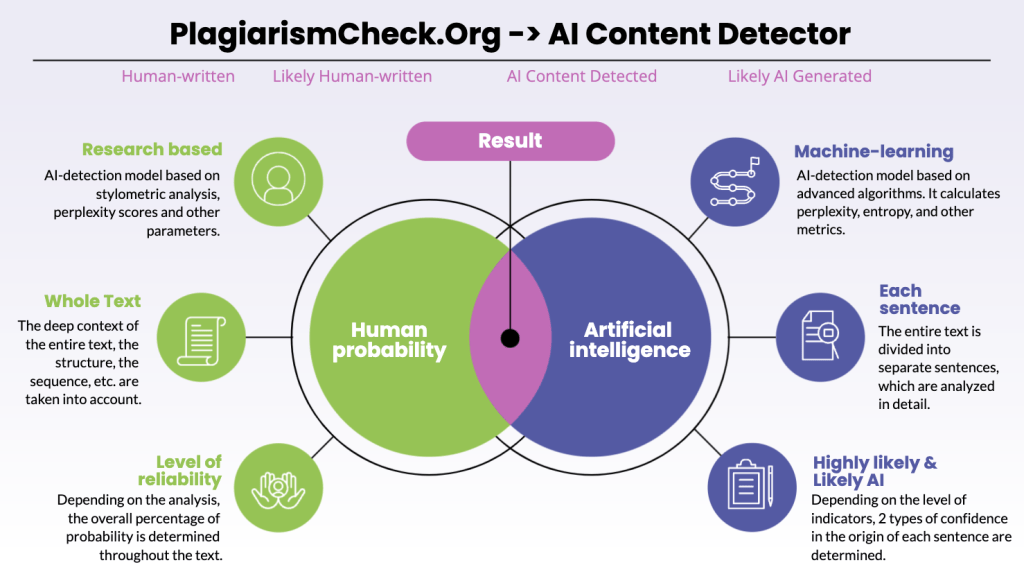
What affects the verdict?
The basic model of the detector is based on the Perplexity metric. Human speech and writing are characterized by a higher level of spontaneity and creativity, while machine-generated texts are more predictable. We take into account other parameters like the style and structure of the text.
Here are the key features that influence the verdict:
- The text is separately analyzed for features characteristic of human writing and AI patterns;
- The text is converted into vectors, and the characteristics are calculated in general and separately for each sentence according to the appropriate formulas;
- Depending on the set level of indicators and the degree of the weight of each of them, the % of reliability is determined.
What are Highly likely AI and Likely AI?
In the report, you see the percentage of sentences marked as Highly likely AI and Likely AI and the overall verdict. But Highly likely AI and Likely AI is not the only parameter affecting the conclusion about the text’s origin. You can examine each sentence in more detail to interpret the result on a deeper level.
It is worth considering:
- Are the sentences generated by AI arranged consecutively (for example, the whole paragraph marked as Highly likely AI is an apparent signal of an AI-written text);
- Are the sentences scattered randomly throughout the text (for example, if you see 1-2 Likely AI sentences, it is more probable that a person writes like AI);
- If we have several Highly likely AI sentences scattered throughout the text, specific manipulations may have been carried out with the text.
To establish this reliably, we analyze each sentence separately and the entire text in general: structure, sentence order, context, etc. Only after weighing all the factors does the AI detector give a general verdict.
 AI Content Detector as part of the PlagiarismCheck tool |  AI Content Detector by PlagiarismCheck.Org as a separate tool |
What does each verdict mean?
So, thanks to the combination of AI detector models, you get a result that unites the percentage of probability in the text as a whole and the rate of individually identified AI sentences.
Human-written
The probability of the whole text being human-written is high: ≥70%. There are just a few potentially AI-written sentences: ≤5%
Likely Human-written
The probability of the whole text being human-written is high: ≥70%. There are less than a third of sentences with signs of AI: 5.01-30%
AI Content Detected
The probability of the whole text being human-written is high: ≥70%. However, there are over a third of sentences with signs of AI: 30.01-100% / “human probability” is 30-69%
Likely AI-Generated
The probability of the whole text being human-written is less than 30%
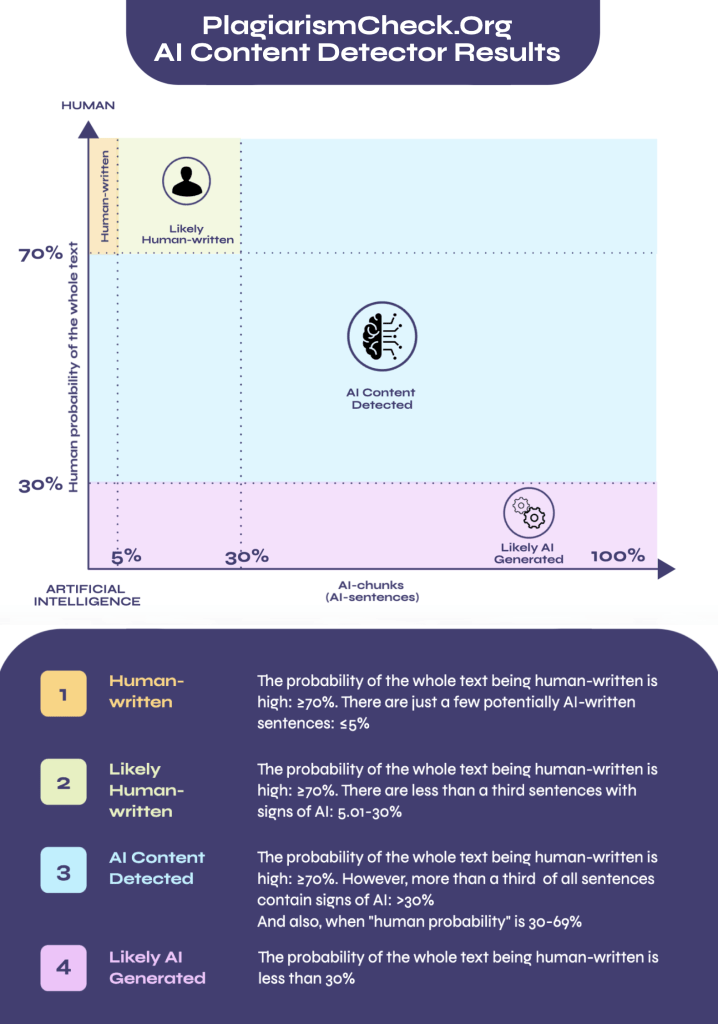
“For example, the AI-detection model determined that a person wrote the text, but at the same time, sentences were detected in the text that corresponded to all the signs of AI-generated. We have determined how many of these sentences are acceptable to still say, this is a human-written text.
Or on the contrary, the model says it is an AI-generated text, but almost no AI sentences are found. It’s a rare situation, most likely – the text was manipulated. However, we tend to trust the model and take many other metrics into account, so it is almost impossible to deceive us,” – explains PlagiarismCheck.org language analyst Nataliia Voropai.
Conclusion: how to use the results
In a few seconds, you will receive an in-depth analysis and be able to establish whether the text was created by AI tools. What to do if the verdict is in the “fairly likely zone”?
Similar to the matches percentage, some organizations have established in their policies which results are passable (for example, Human-written and Likely human-written) and what % of AI sentences are permissible in the texts (for example, up to 10% Highly likely and up to 20% Likely AI).
Human-written | With this result, you can be bold in further actions and decisions. |
類 Likely human-written | Pay attention to the percentage and analyze the sentences marked as Highly likely AI and Likely AI. |
AI Content Detected | Likewise, analyze the parts of the text that the tool flagged as AI-generated. Ask the authors questions about them if possible and find out how deeply they understand the content. |
烙 Likely AI-Generated | For an AI-positive result, we recommend cross-re-analysis of the text or peer-review. After all, being accused of unauthorized use of AI will have serious negative consequences for a student, employee, or company. |
Depending on the purpose, what you are detecting or presenting in the AI text, you can:
- provide feedback for improvement using our handy report tool;
- reject or refine AI-generated content;
- check the validity of AI-generated sentences more carefully.
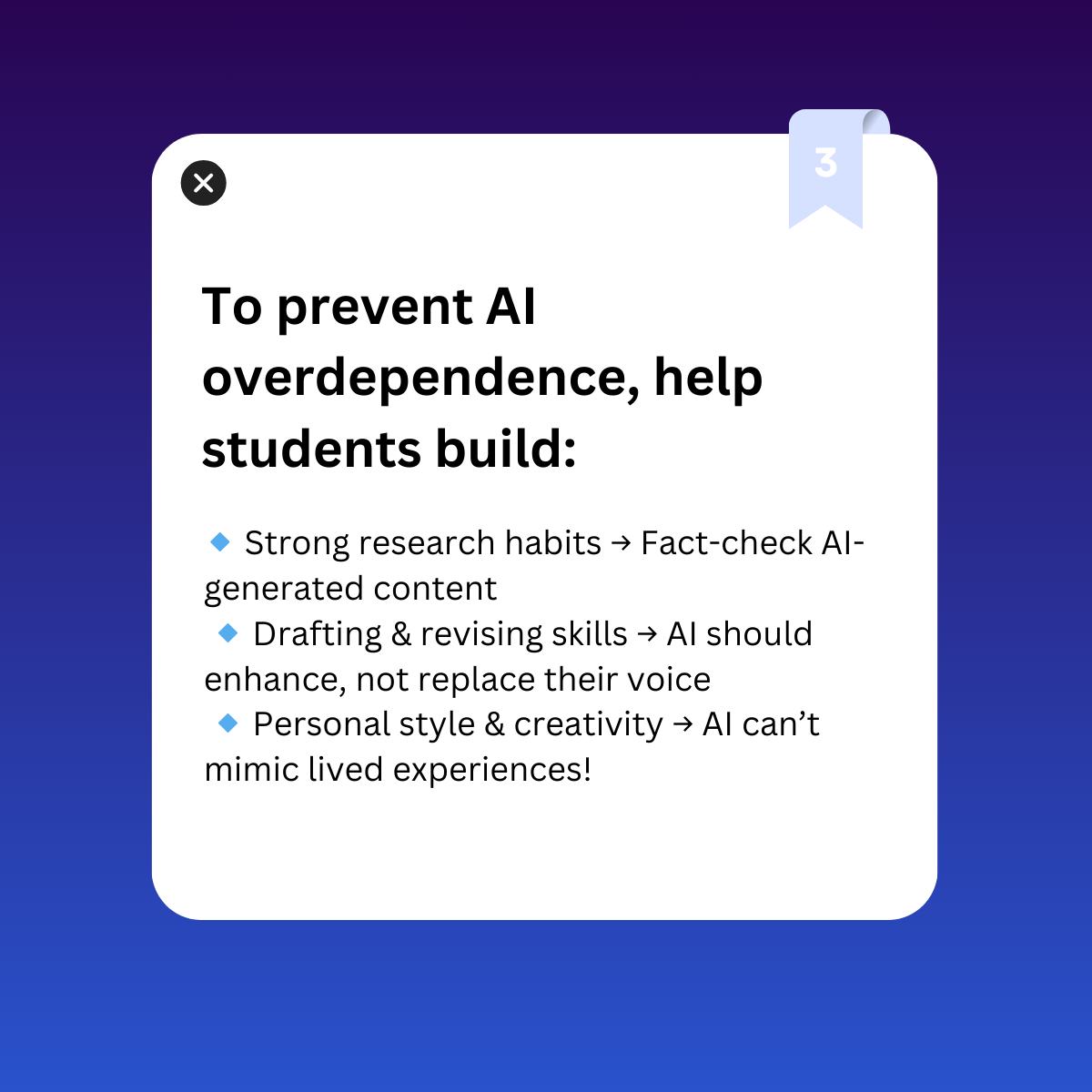
Note that AI Content Detector by PlagiarismCheck, has been trained on a sufficient number of data sets; recognizes the latest models of AI generators; continues to develop its algorithms, along with the development of AI writing. AI Content Detector meets 5+ Most Important Criteria (Accuracy, Reliability, Fairness, Transparency, Integration, etc.).
It can be combined with plagiarism tool and integrated into the system of your existing software, LMS, or website. And most importantly, interpreting the AI detector’s four-level results is accurate and straightforward.
